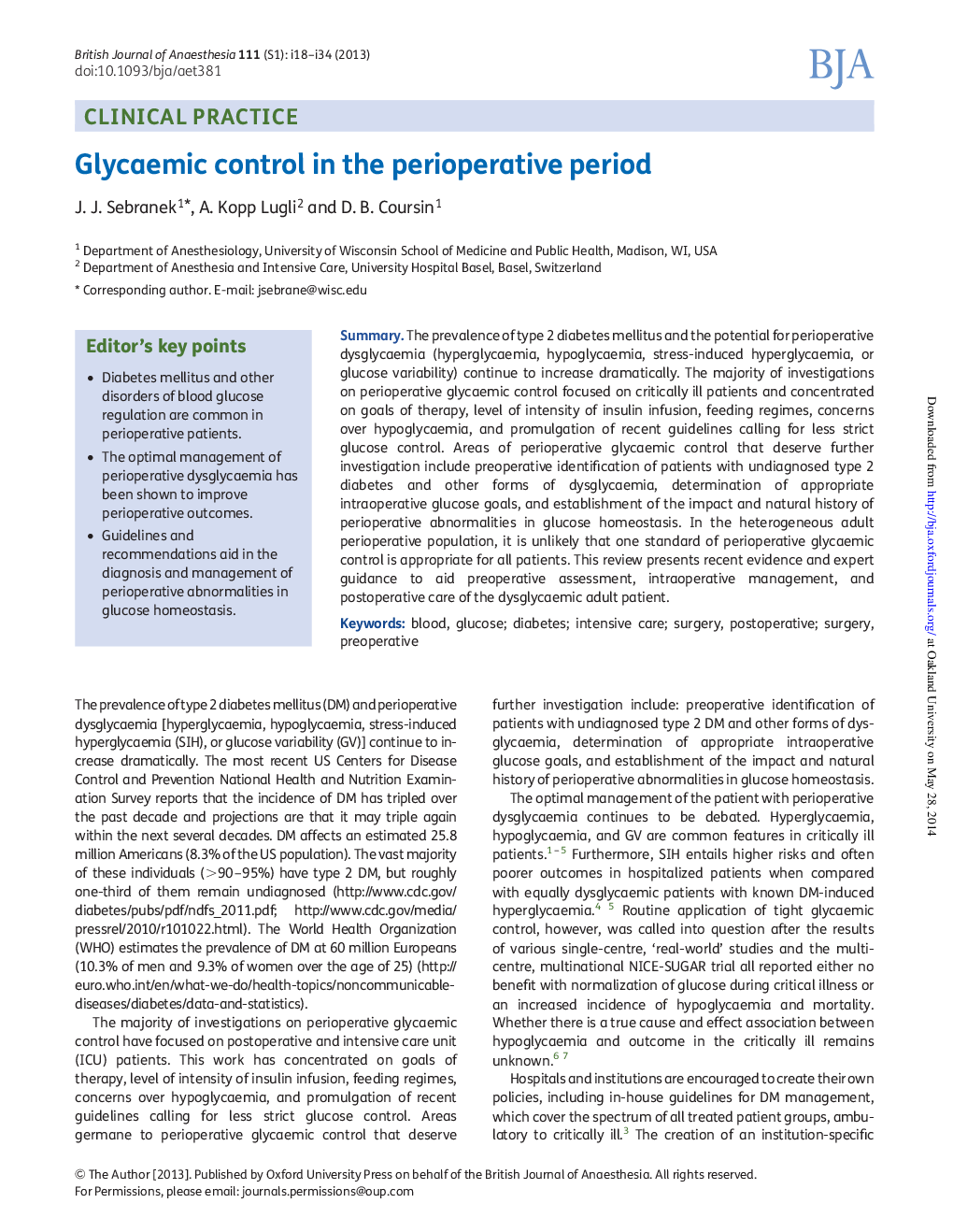| Article ID | Journal | Published Year | Pages | File Type |
|---|---|---|---|---|
| 8933753 | British Journal of Anaesthesia | 2013 | 17 Pages |
Abstract
The prevalence of type 2 diabetes mellitus and the potential for perioperative dysglycaemia (hyperglycaemia, hypoglycaemia, stress-induced hyperglycaemia, or glucose variability) continue to increase dramatically. The majority of investigations on perioperative glycaemic control focused on critically ill patients and concentrated on goals of therapy, level of intensity of insulin infusion, feeding regimes, concerns over hypoglycaemia, and promulgation of recent guidelines calling for less strict glucose control. Areas of perioperative glycaemic control that deserve further investigation include preoperative identification of patients with undiagnosed type 2 diabetes and other forms of dysglycaemia, determination of appropriate intraoperative glucose goals, and establishment of the impact and natural history of perioperative abnormalities in glucose homeostasis. In the heterogeneous adult perioperative population, it is unlikely that one standard of perioperative glycaemic control is appropriate for all patients. This review presents recent evidence and expert guidance to aid preoperative assessment, intraoperative management, and postoperative care of the dysglycaemic adult patient.
Keywords
Related Topics
Health Sciences
Medicine and Dentistry
Anesthesiology and Pain Medicine
Authors
J.J. Sebranek, A. Kopp Lugli, D.B. Coursin,
